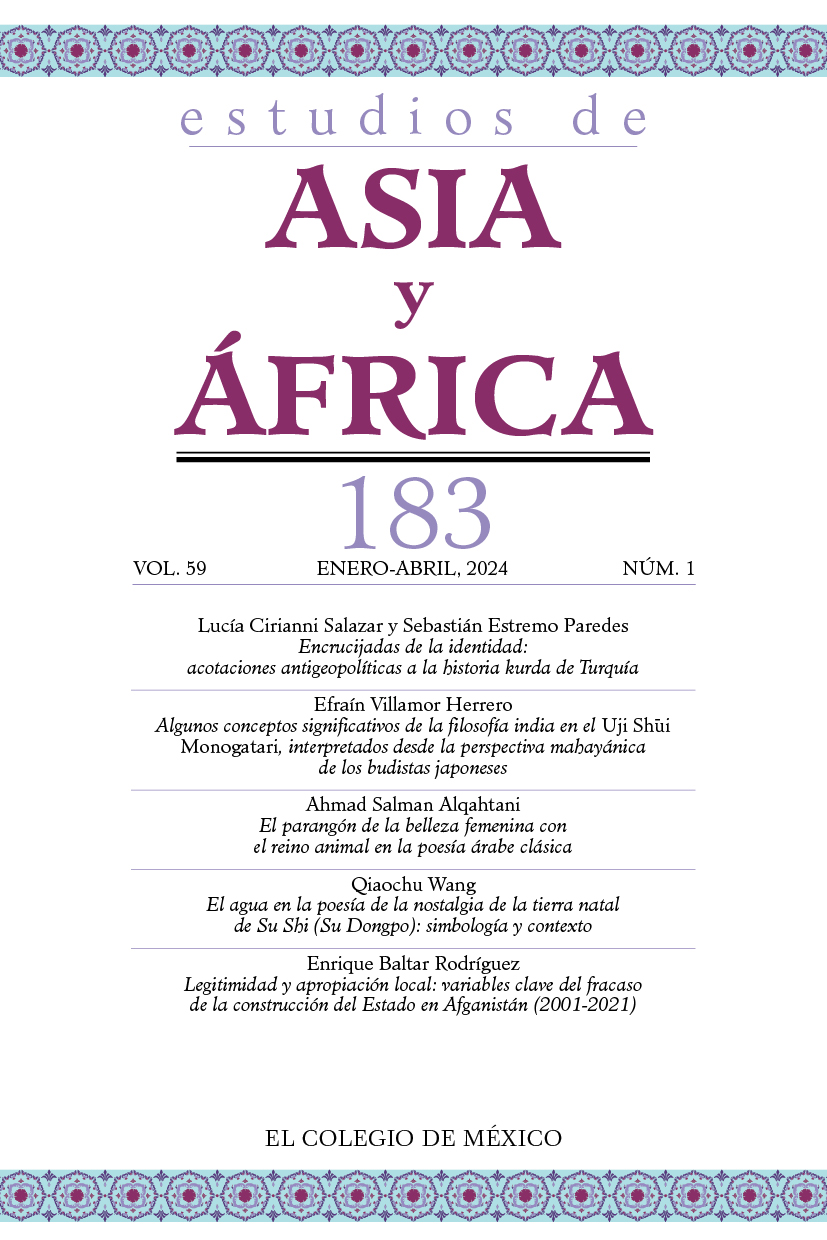Abstract
This paper seeks to frame The World of the Oxus Civilization, edited by Bertille Lyonnet and Nadezhda Dubova, in the context of the rediscovery of the ancient civilizations of Central Asia, as well as to review and value it. This is the first monograph to cover from a global perspective what is known as the Oxus Civilization or the Bactria-Margiana Archaeological Complex; one of the last great civilizations to be rediscovered. Once the book is framed within the historiography of the archaeology of Central Asia, the event at which it was presented in Mexico is discussed, building a bridge with national archaeology.
References
Argüello, José Antonio. 2019. “Desenterrando el Antiguo Oriente: historiografía y estudio de las colecciones arqueológicas del Museo Nacional de las Culturas”. Tesis de licenciatura, Escuela Nacional de Antropología e Historia.
Aruz, Joan, ed. 2003. Art of the First Cities: The Third Millennium BC from the Mediterranean to the Indus. Nueva York: Metropolitan Museum of Art.
Blesa, José Luis. 2018. “Los arios. Historia y modos de vida de los pueblos centroasiáticos de la Edad del Hierro”. Tesis doctoral inédita, Universidad Autónoma de Madrid.
Bosch-Romeu, Teresa. 1999. Conversaciones en torno a Pedro Bosch-Gimpera. México: Escuela Nacional de Antropología e Historia.
Colloque bilatéral franco-soviétique. 1985. L’archéologie de la Bactriane ancienne : actes du Colloque franco-soviétique, Dushanbe (URSS), 27 octobre-3 novembre 1982. París: Éditions du Centre national de la recherche scientifique.
Francfort, Henri-Paul. 1984. “The Early Periods of Shortughaï (Harappan) and the Western Bactrian Culture of Dashly”. En South Asian Archaeology 1981, editado por Bridget Allchin, 170-175. Cambridge: Cambridge University Press.
Francfort, Henri-Paul, ed. 1990, Nomades et sédentaires en Asie centrale. Apports de l’archéologie et de l’ethnologie. Actes du colloque franco-soviétique Alma-Ata (Ka zakhstan) 17-26 octobre 1987. París: Éditions du Centre national de la recherche scientifique.
Francfort, Henri-Paul. 2016. “How the Twins Met: Indus and Oxus Bronze Age Civilizations in Eastern Bactria. Shortughaï Revisited Forty Years Later”. En Transactions of Margiana Archaeological Expedition, vol. 6, To the Memory of Professor Victor Sarianidi, editado por Nadezhda A. Dubova et al., 461-475. Moscú: Staryj sad.
Gardin, Jean-Claude, ed. 1988. L’Asie centrale et ses rapports avec les civilisations orientales, des origines à l’Âge du Fer : actes du colloque franco-soviétique organisé par le Centre national de la recherche scientifique et l’Académie des sciences de l’U.R.S.S., avec la collaboration de la Direction générale des relations culturelles; Paris, 19-26 novembre 1985. París: Boccard.
Hammond, Norman. 2021. “Reseña de Bertille Lyonnet & Nadezhda Dubova (ed.). 2020. The World of the Oxus Civilization. Abingdon: Routledge”. Antiquity 95 (381): 826-828. https://doi.org/10.15184/aqy.2021.34
Kohl, Philip. 1984. Central Asia: Paleolithic Beginnings to the Iron Age. París: Éditions Recherche sur les Civilisations.
Kuz’mina, Elena. 2007a. The Origin of the Indo-Iranians. Leiden: Brill. https://doi.org/10.1163/ej.9789004160545.i-763
Kuz’mina, Elena. 2007b. The Prehistory of the Silk Road. Editado por Victor H. Mair. Filadelfia: University of Pennsylvania Press.
Liverani, Mario. 2011. Antico Oriente. Storia, società, economía. Roma: Laterza. [La edición original italiana es de 1988. Hay una edición en español publicada por Crítica en 1995, con una edición más reciente de 2013].
Lyonnet, Bertille y Nadezhda Dubova, eds. 2021. The World of the Oxus Civilization. Londres: Routledge. https://doi.org/10.4324/9781315193359
Manzanilla, Linda. 1986. La constitución de la sociedad urbana en Mesopotamia. Un proceso en la Historia. México: Universidad Nacional Autónoma de México.
Mohammadi Shirmahaleh, Shekoufeh, ed. 2022. Siyawash en el espejo del mito: raíces y resonancias. México: Universidad Nacional Autónoma de México.
Sarianidi, Viktor. 1974. “Baktrija v epokhu bronzy” [Bactriana en la Edad del Bronce]. Sovetskaja Arkheologija 4: 49-71.
UNESCO. 2010. History of Civilizations of Central Asia. 6 vols. París: UNESCO.
This work is licensed under a Creative Commons Attribution-NonCommercial-NoDerivatives 4.0 International License
Copyright 2022 Estudios de Asia y África



